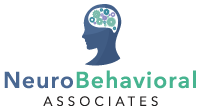As a parent, it is only natural to worry about your child’s mental well-being. Since the COVID-19 pandemic, mental health issues have skyrocketed, specifically impacting children who had to adjust to learning remotely and cutting off social activities. If you are worried about your child’s mental health and are curious about dysthymia, keep reading.
What Is Dysthymia?
You might be asking yourself, what exactly is dysthymia? Dysthymia, otherwise known as persistent depressive disorder, is similar to major depressive disorder but with a few traits that set it apart. While depression can be sporadic or indent for short periods of time, dysthymia is longer-lasting. Dysthymia has longer depressive episodes which tend to be milder, with some cases occurring longer than 2 years in some patients. (1)
Understanding Persistent Depressive Disorder
It is not always easy to understand the cause or root of persistent depressive disorder. This mental health disorder can vary from person to person and can come in waves. Children with persistent depressive disorder often find it difficult to be happy even during joyous occasions. Birthdays, accomplishments, and other celebrations can be hard to enjoy for those who suffer.
Persistent depressive disorder can be both mild and long-term, making finding a sustainable treatment plan a challenge. This is because there is no quick fix to understanding coping strategies. Instead, psychiatrists will usually recommend a combination of talk therapy and medicine through a series of trial and error to find a treatment plan that is appropriate for the individual patient.
What Causes Dysthymia?
Dysthymia is caused by chemical imbalances in the brain that are not able to be controlled without consistency and hard work. External factors such as environmental changes can also make symptoms worse. If your family has a history of genetic mental health disorders, this can put your child at an increased risk as well. (2)
How Common Is It?
Dysthymia Is a common mental health disorder that impacts just over 2.5% of the United States population. This percentage is not all-encompassing of individuals who will suffer for the duration of their lives, as many individuals, especially children, can find coping strategies to overcome this challenge. Dysthymia Is just about as common as major depressive disorder, which is one of the most common mental health disorders among children across the globe. (3)
How Long Does The Condition Last?
The length that a child suffers from dysthymia will depend on a wide variety of different factors. This will depend on the time it takes to get a proper diagnosis, number of trial and error sessions it takes for your child to find relief, and a combination of both biological and environmental factors. Some children may suffer for a few weeks or a few months, while others will have a more chronic case that lasts several years.
Treatments and Counseling
There are many different treatment plans available for children who suffer from dysthymia. This is both a good and bad thing! The good news is that if one treatment plan fails, there is a different method that your child can try to gain relief. On the other hand, finding coping mechanisms may take longer than expected due to each child’s condition being so individual. Oftentimes, psychiatrists will recommend children begin with cognitive behavioral therapy and then move on to medications such as antidepressants to help strengthen treatment.
We hope this article helped you better understand dysthymia so that you can help support your child through their mental health journey. For more helpful resources and content on all things mental well-being, contact NeuroBehavioral Associates today!
Resources:
- Persistent Depressive Disorder (Dysthymic Disorder) – National Institute of Mental Health
- Dysthymia Disorder – Texas A&M University
- Dysthymia Disorder – Medscape

